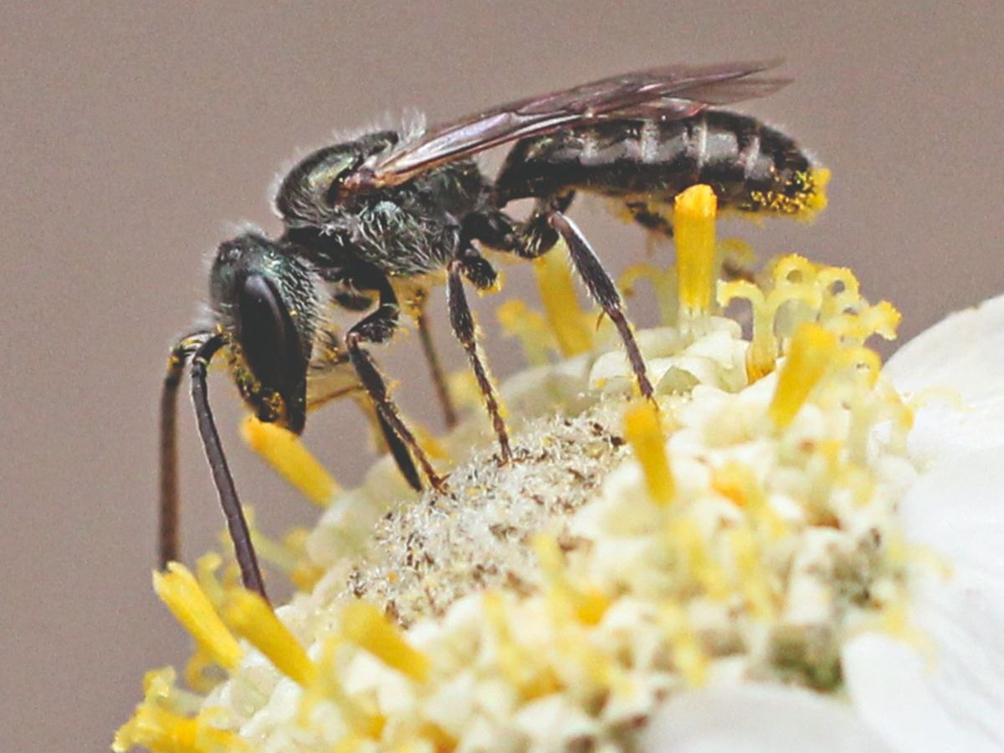26/10/2023

We have more than 30 different furrow bees across the UK, including the Common furrow bee and the Green furrow bee, but it is very difficult to tell them apart because they are all small, (6-7mm) slender, dark-coloured bees.
Although they don’t conform to our image of a bee, they pollinate a wide variety of flowering plants from which they collect nectar and pollen.
They fly from March to October, so are one the few bee species that are still foraging in our parks and gardens in autumn.
Furrow bees are generally, solitary bees with a single female creating tunnels underground where she lays her eggs and provisions each egg with pollen. They often nest next door to each other in large aggregations and may even share a nest entrance with individual side tunnels.
The Common furrow bee, however, is one species of furrow bee that may display eusocial behaviour, which means a female may construct a nest in which she rears smaller, infertile female, worker bees who become her foragers – going out to collect pollen to feed the next generation – while she stays at home laying eggs.
Worldwide, there are more than 1,700 furrow bees making them the largest genus of bees.
They are often small, metallic-coloured and known as sweat bees because in tropical regions they may lick you to get salt in your sweat. It’s thought that the sweat may be important for nutrients needed for reproduction.
Helping furrow bees
1. Grow food
Daisy-like, thistle-like flowers and knapweeds are all visited and pollinated by furrow bees. The little, white daisies of Mexican fleabane (Erigeron karvinskianus), grow well in pots and window boxes and are still flowering this month.
2. Create a nesting site
You could try to create a 400mm deep bank of sand mixed with some clay soil against a south facing wall, or a free-standing mound, for all types of furrow bees. The clay will help the bank to keep its shape after the bees have tunnelled into it.
3. Observe and appreciate
Learn to distinguish these small, dark bees from flies and other insects. If you have a window box of Mexican fleabane in a sunny spot they are likely to be one of only a handful of bee species to forage on the flowers in autumn.
For other bees to see this month, how to tell them apart, and how to help them, sign up to Alison’s free Buzz newsletter


